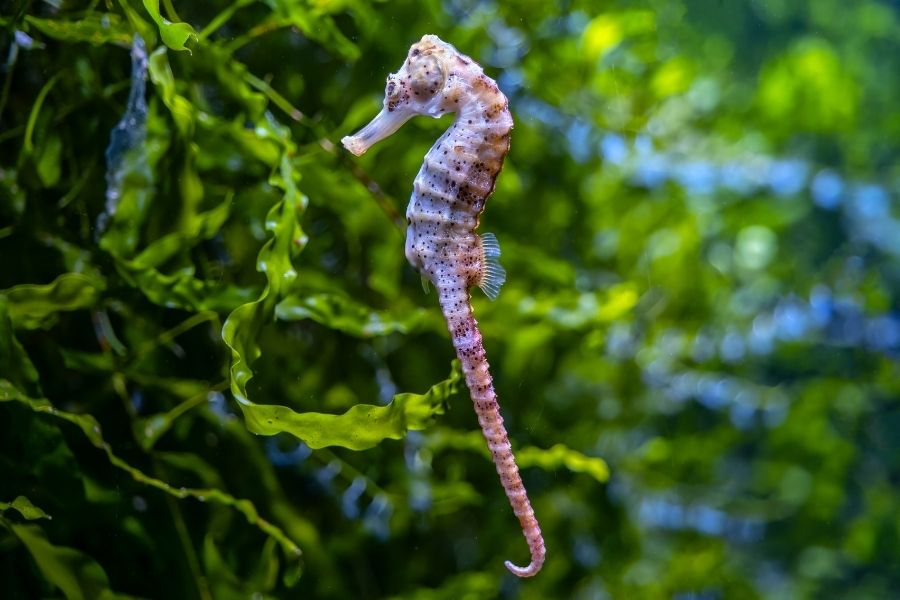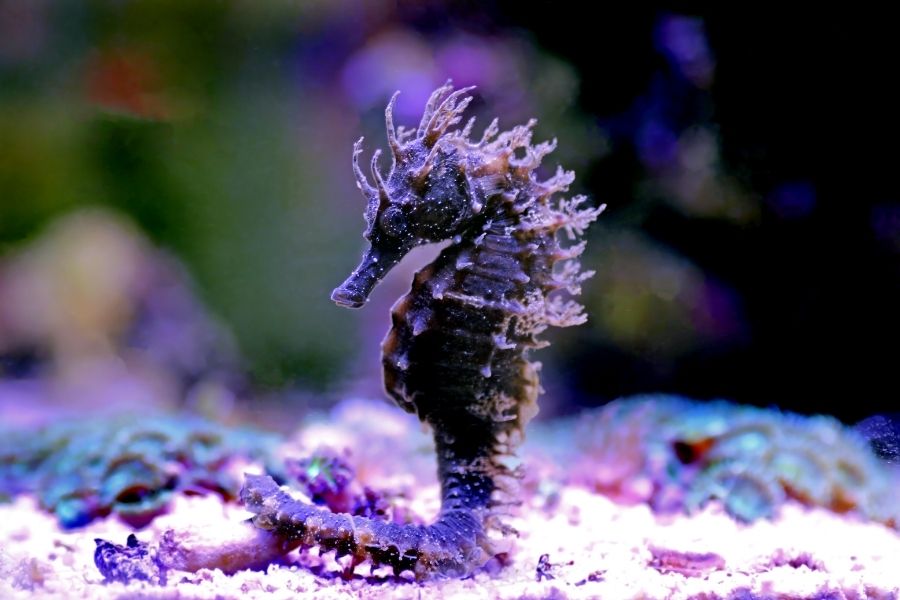Seahorses in Saltwater Aquariums

Hello, how are you today? Welcome to our blog About Pets. We hope you are very well and looking forward to a new post about Pets.
Today we want to share with you a special post about:
Seahorses in Aquariums!
Until recently, it was considered difficult to keep seahorses alive in an aquarium for long periods of time. The first experiments were done with wild-caught seahorses. These samples usually die of starvation or infection within a few months.
But when the pioneers of seahorse farming decided how to breed them in captivity (aquaculture), it became possible to keep seahorses in an aquarium for an extended period. Unlike wild-caught seahorses, captive-raised seahorses consume light food.
The basics of the hippocampus
Seahorses have an exoskeleton (like a crustacean) that is covered by skin type rather than scales. This makes the hippocampus more prone to external damage and infection than most fish. The gills of a seahorse is not as developed as most bony fish.
There are more than 30 recognized seahorses of the genus Hippocampus that inhabit tropical, subtropical, and temperate waters around the world, but only a handful of species are normally found in the aquarium trade.
The smooth seahorse (Hippocampus kuda) and the fed seahorse (Hippocampus erectus) is the most common seahorse species in aquariums. The pygmy seahorse (Hippocampus zostera) found in the wild in the western Atlantic, from Bermuda to the Bahamas, southern Florida, and the Gulf of Mexico.
As its name suggests, it is a tiny creature that grows less than two inches, making it ideal for mini or nano reef aquariums.

Seahorse Aquariums
A seahorse aquarium should be at least 18 inches long. Seahorses prefer to go up and down in an aquarium rather than sideways. If you plan to keep more than one small seahorse or one of the larger species of seahorses, you will need a larger aquarium.
Because they are not good swimmers (and their gills are not very efficient), seahorses do not like strong movements of water.1 The seahorse has a short and very primitive digestive tract that allows a large amount of food remains unsafe. the bottom of the tank which increases water quality problems.
Seahorses need at least one PTO or docking station in the tank so they don't have to swim all the time. When they're not foraging, seahorses spend most of their time with their tails wrapped around just about anything that keeps them calm. Gorgonians are great for mooring as well as fake corals or even plastic aquarium plants.
Feed the seahorses
Seahorses should be fed at least twice a day. The best food for captive-raised seahorses is frozen Mysis shrimp. If you get a seahorse from aquaculture, it's probably already eating Mysis, so getting it to eat in your tank shouldn't be a problem.
While you can pour some thawed Mysis into the tank and let the seahorses chase you until they have a bit of a hold, aiming to feed your ponies in an area of the tank with little water flow will make it easier for you to get enough food without having to work too hard.
Seahorse Compatible Tankmates
Seahorses don't feed aggressively, so any fish or invertebrates you include in the tank should be slow and cautious.
Enjoy The Video Tutorial all About Seahorses - Tank Setup, Feeding, Care, and more!
Source: ReefMan
Did you find this post Useful or Inspiring? Save THIS PIN to your Pets Board on Pinterest! 😊

Ok, That is all for now…
If you enjoyed this article please, Share and Like our Facebook Page. Thanks.
See you in the next post, Have a Wonderful Day!
